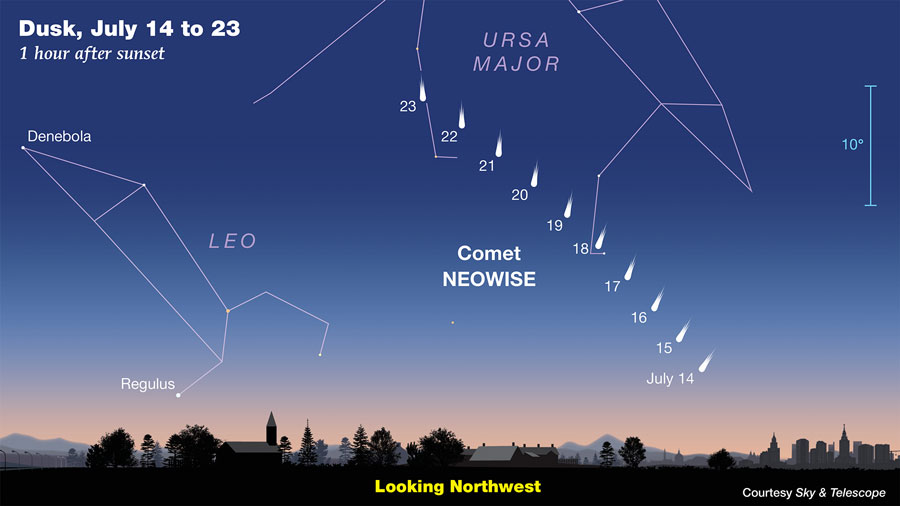Get out your binoculars. There’s still time to see Comet NEOWISE
Published at | Updated at
The following is a news release from Sky and Telescope.
IDAHO FALLS – An unexpected celestial newcomer, after falling toward the Sun for more than 3,000 years, is making a lovely appearance in our skies right now. You can see it for yourself very low in the northwest in the evening after sunset — but you’ll need to know exactly where and what to look for, and binoculars will help.
Comet NEOWISE is named for the NASA infrared space telescope that discovered it on March 27th. Officially designated C/2020 F3, it passed just 27.4 million miles from the Sun (inside the orbit of Mercury) on July 3rd and has emerged into view low over the horizon in the early dawn.
It was well-positioned for skywatchers at mid-northern latitudes (including most of the United States, Canada, and Europe) for the mornings of July 10th through 14th. The farther north you are, the better.
“The comet was easily seen by eye on the morning of July 9th,” says Sean Walker, associate editor for Sky & Telescope. “I could see the curve of the tail without optical aid, about 3 degrees long.”
Comet NEOWISE is gradually fading as it draws away from the sun, but meanwhile, it’s edging nearer to Earth. The comet will be closest to Earth, 64 million miles away, on July 23rd.
FIND THE COMET: JULY 14TH AND AFTER
From the 14th onward, the comet’s motion will have shifted its best viewing opportunity to the evening sky. By then Comet NEOWISE might no longer be visible by eye, but the chance of glimpsing it improves if you can find a location that’s free of light pollution.
Start looking about 1 hour after sunset, when you’ll find it just over the northwestern horizon as the last of twilight fades into darkness. Look about three fists below the bottom of the Big Dipper, which is hanging down by its handle high above, and from there perhaps a little to right.
Every evening thereafter the comet will be getting dimmer, but it will also be getting higher up as twilight ends. On the evening of the 23rd, when Comet NEOWISE is its closest to Earth, locate it by first noting the two stars at the bottom of the Big Dipper’s bowl. Then draw an imaginary line through them and toward the lower left to a point in the sky a little more than one fist away. But by that date, you’ll almost certainly need binoculars or a telescope.
Want to try taking take pictures? Bring a tripod and a camera that can take time exposures several seconds long. Unfortunately, even the best phone cameras will give mediocre results. What you really want is a DSLR camera with a telephoto lens.



